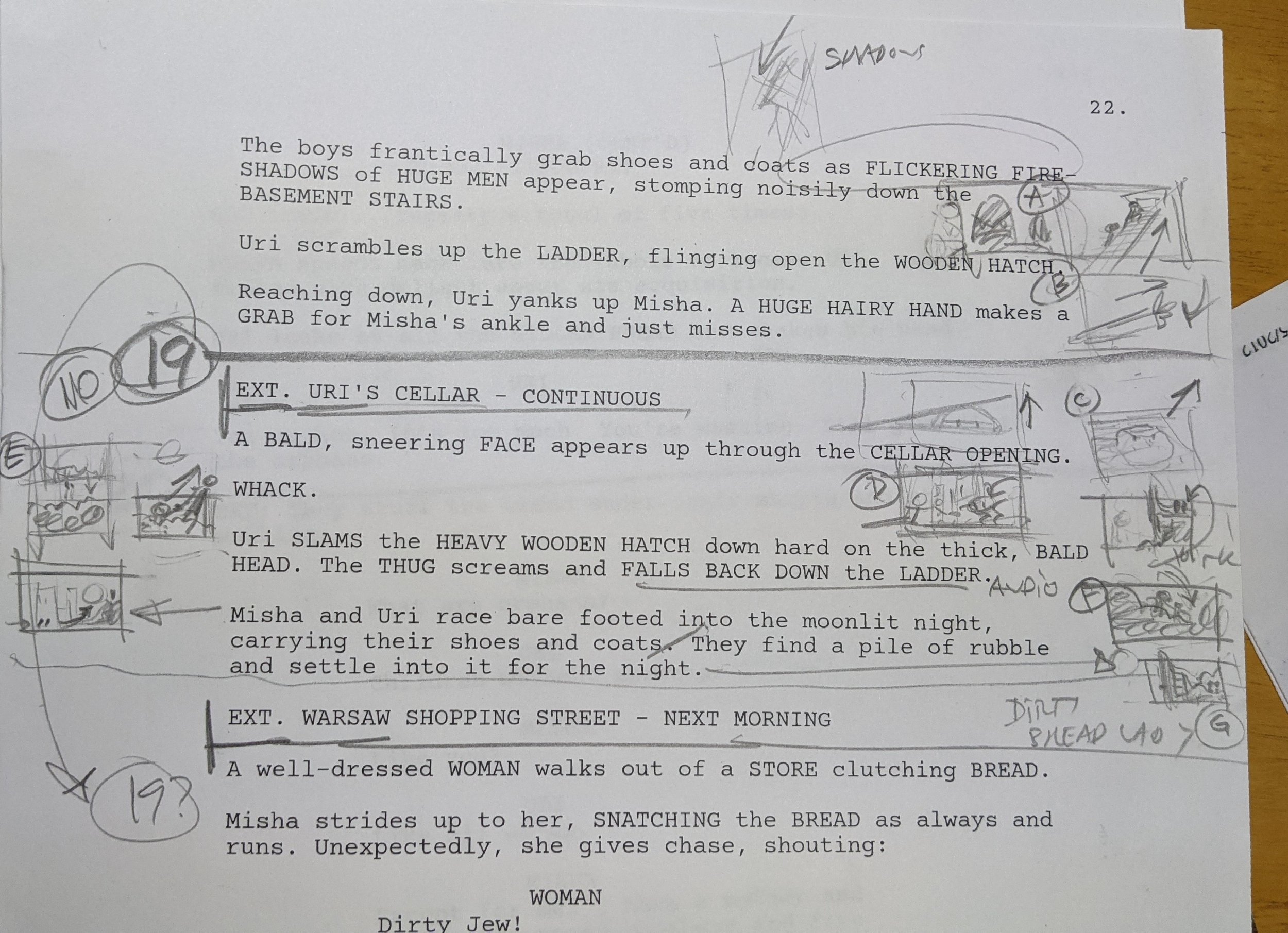Milkweed film update
Wonder what we’ve been up to on the “Milkweed” film front? Well, let our summer social media intern, Bruno Povejsil, catch you up!
MAKING MILKWEED - The Story(board) So Far
In August 2021, WOMO Studios held a Storyboard Intensive spanning three weeks. In that time, the team started work on the first stage of the animation process - the storyboard, which makes the creative vision of Milkweed the Movie physically visible.
Wait! What’s a storyboard?
A storyboard is a series of images that demonstrate the most important characters, locations, and actions that will appear in a given animation sequence. Think of this as the visual counterpart to the script of a movie. Like a script, the storyboard is subject to edits and revisions later in the film’s production, if necessary.
The storyboard process starts with a series of small, quick sketches called thumbnails (because they are sometimes literally the size of a thumbnail). These thumbnails are often done directly on the script to capture the first impressions of the action.
Here are a few examples:
Thumbnail sketches get their name from the fact they they, often, are the size of thumbnails!
From there, we moved to the all-important TABLE READ and Radio Play!
Earlier in the summer, the animation team — Art Director Annita Soble, Co-directors Mike Owens and Wendie Owens, Producer Gail Rosenblum, Animation Producer Audrey Robinson Favorito, Music & Soundtrack Supervisor Supervisor Tom Lieberman, and a few friends — including the brilliant Lorna Landvik — got together over Zoom to read the script. Each of them was cast in a role with a narrator reading the action.
We recorded this table read and edited together a first draft radio play of Milkweed. This first edit helped us envision roughly how long the movie is going to be. This radio play was used to set our thumbnails to the action.
Just like the thumbnail sketches, this table read gives us a sketch version of the voices for the entire film before we cast and record the final voices.
Hey! Do you recognize anyone here?
Top row, l-r: Lorna Landvik, Gail Rosenblum, David Dellarocco; second row, l-r, Annita Soble, Tom Lieberman, Mike Owens, Wendie Owens; bottom row, l-r, Larry Wechsler, Audrey Robinson Favorito
Now let’s talk about the animatic and budgeting for animation because Producer Gail Rosenblum always likes to talk about budgeting!
During the Storyboard Intensive, which we mentioned above, WOMO finished 12 storyboard sequences out of the 65 planned for Milkweed. The rest will be finished over the next several months, and then the team will create an animatic, where the thumbnails will be edited together with a recording of the script (called a “table read”) that is made to establish the pacing of dialogue to create a rough approximation of what the movie will look like before the first editing pass to the storyboards.
“The animatic,” said Milkweed’s co-director Mike Owens, “is a good way for the team to view the movie on a macro level after we’ve spent a lot of time working on the micro details.”
With the animatic finished, WOMO Studios can begin budgeting the production of the actual animation. Knowing the runtime of the film is critical to budgeting, as every second of animation has a cost that needs to be accounted for. Sequences can be easier or harder to animate depending on how many characters are involved, how much the characters are moving, and so on. A quiet conversation between two characters requires less time to finish than a tense chase through the streets with dozens of background characters.
Here are a few sequences. If you've read Jerry Spinelli's young adult novel, Milkweed, you might recognize the sweet scene with the little heart -- a precious time of innocence.
Now, let’s hear from our directors and what they think of the process:
Milkweed co-director Mike Owens explains that “storyboarding pulls us out of the hardest part of the director mindset; we don’t know what we want until we see what we don’t want.” The storyboarding process allows directors to settle on how they want scenes and cuts to flow before the more expensive and labor-intensive processes of animation begin. In larger animation projects, such as Disney films, the storyboard might have its own dedicated director and staff, but WOMO is a smaller studio, so everyone on the team is filling multiple roles, including contributing to thumbnails.
Art Director Annita Soble at work
“The important thing during the storyboarding process is understanding how everything is going to feel, rather than focusing on the aesthetic details,” said Milkweed Art Director Annita Soble. “The storyboard is the most malleable phase of animation, so we need to worry about adding nuance later while we throw all our ideas at the board now.” When the storyboard is finished, Annita will direct her attention to fleshing out the character designs and the ambience of the world of Milkweed.
Co-director Wendie Owens is enthusiastic about the process. “I feel very immersed in the story now thanks to our work together. Our meetings are getting us all into the same mindset to piece together scenes and ideas. It’s like we’re merging into one giant brain that’s building this project.” Annita added, “Even though all of us have distinct art styles that show in the thumbnails, it’s really cool to see how our work starts to flow together.”
The gears are turning and the WOMO hive mind is activated. Thank you for joining us on this journey!








